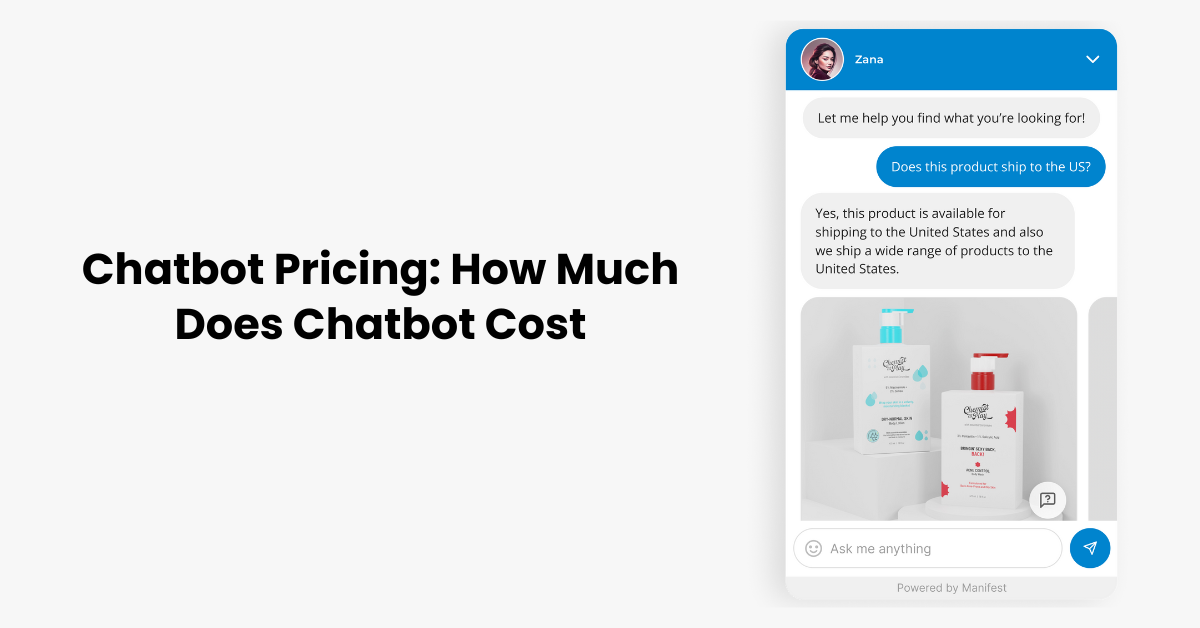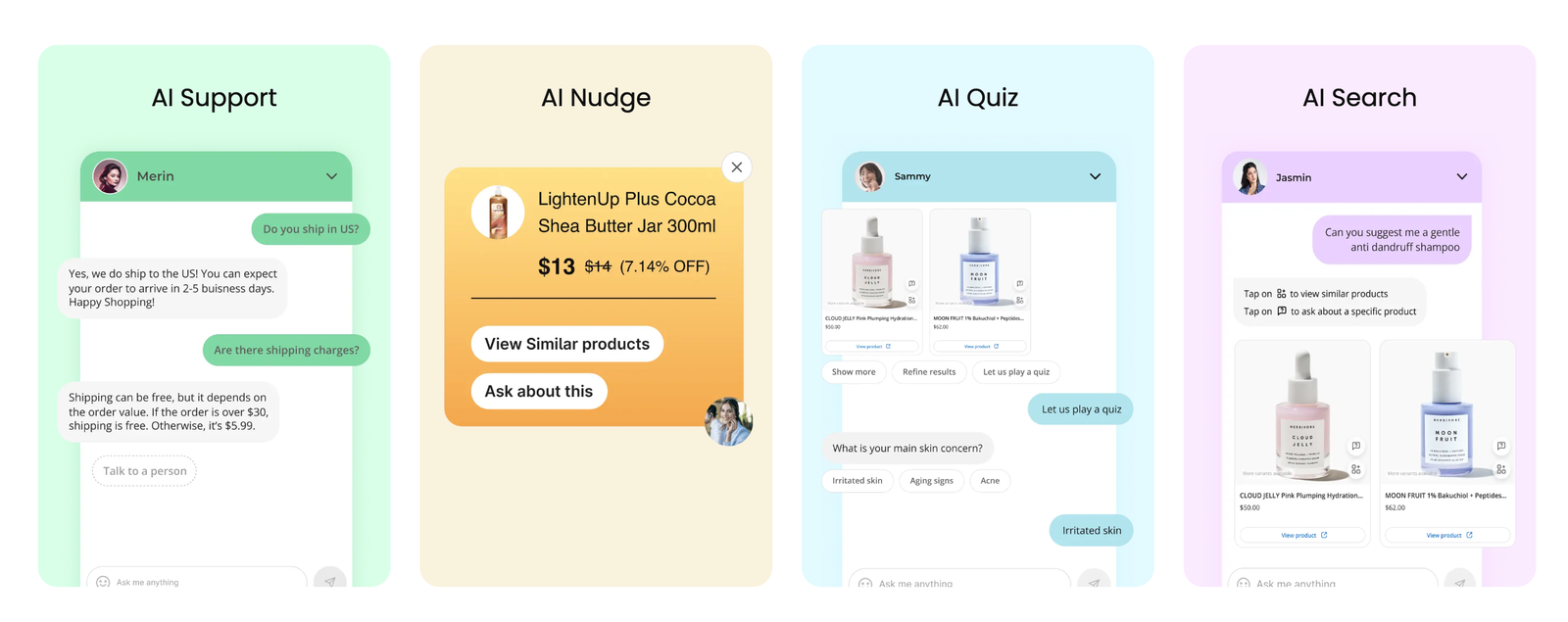Chatbot Pricing: How Much Does Chatbot Cost (2024)

Chatbots have emerged as invaluable assets for enhancing customer interaction and automating services. The initial question on many business owners' minds, however, revolves around the investment required to integrate this technology. The cost of implementing a chatbot varies widely, influenced by factors such as complexity, customization, and the platform used. This guide aims to demystify chatbot pricing, providing insights into what you can expect to spend. From simple, rule-based bots to advanced AI-driven assistants, understanding the financial aspect is crucial for making informed decisions that align with your business goals and budget. Let’s dive into the nuances of chatbot pricing, shedding light on this modern technological solution.
Chatbot pricing comparison table

Here is the average chatbot pricing shown as per 3 levels:
- Basic/Free Plans: Many chatbot platforms offer a basic or free plan designed for startups and small businesses. These usually include limited features, a capped number of interactions or messages, and basic AI capabilities. Pricing for upgrades from free plans typically starts at $10-$50 per month, depending on the provider.
- Mid-Level Plans: For medium-sized businesses requiring more sophisticated features such as integration capabilities, advanced analytics, and increased interaction limits, plans can range from $50 to $500 per month. These plans offer a balance between cost and functionality, suitable for businesses looking to enhance their chatbot experience without a significant investment.
- Enterprise Solutions: Large enterprises with complex needs, such as full customization, high-volume traffic, extensive integration, and advanced AI capabilities, can expect pricing to start from $500 and go up to several thousand dollars per month. These plans often include dedicated support, onboarding assistance, and customized development.
Factors Affecting Chatbot Pricing
Chatbot pricing can vary widely based on several factors. Understanding these can help businesses make informed decisions tailored to their needs and budget. Here are the key elements that influence chatbot pricing:
- Type of Chatbot: The complexity of the chatbot, from simple rule-based models that respond to specific commands to more sophisticated AI-driven bots capable of understanding natural language, significantly affects the price. AI chatbots require more advanced programming and data processing capabilities, which increase costs.
- Customization Level: Custom features tailored to a business's specific requirements, such as branding, bespoke workflows, and personalized customer interactions, can also impact pricing. More customization usually means higher costs due to the additional development work involved.
- Integration Requirements: The ability to integrate the chatbot with existing business systems (CRM, ERP, social media platforms) can affect pricing. Complex integrations require more development effort and testing, leading to higher costs.
- Platform Dependency: Whether the chatbot is built for a specific platform (like Facebook Messenger, WhatsApp, or a website) or across multiple platforms can influence the price. Multi-platform bots typically cost more due to the increased complexity of development and maintenance.
- User Volume and Traffic: Pricing can be dependent on the expected volume of interactions. Plans often include tiered pricing based on the number of messages or conversations the chatbot handles, with costs increasing for higher volumes.
- Maintenance and Support: Ongoing support, including updates, bug fixes, and customer service, can also factor into chatbot pricing. Continuous maintenance is crucial for ensuring the chatbot performs optimally over time.
- Analytics and Reporting: Advanced analytics and reporting features, which help businesses track engagement, user satisfaction, and other key metrics, might add to the cost. These features are vital for refining chatbot strategies and improving ROI.
- Compliance and Security: For industries that require strict data protection and compliance standards, such as finance and healthcare, ensuring the chatbot meets these requirements can increase pricing. Security features and compliance with regulations like GDPR are essential but may come at a premium.
Three popular pricing models
Three widely adopted pricing models across various industries are Subscription-Based, Pay-Per-Use, and Freemium. Each model caters to different business strategies and customer needs, offering unique benefits and considerations.
- Subscription-Based Model:
This model charges customers a recurring fee at regular intervals (monthly, annually) for continuous access to a product or service. It's prevalent in software as a service (SaaS), streaming platforms, and membership services. The subscription model provides predictable revenue for businesses and simplifies budgeting for customers. It encourages long-term customer relationships but requires companies to maintain high service quality to prevent churn. - Pay-Per-Use Model:
Also known as pay-as-you-go, this model charges customers based on their usage of a service or product. Common in utilities, cloud computing services, and telecommunications, it allows for flexibility and scalability, appealing to customers who prefer paying only for what they use. This model can attract a broader customer base by lowering entry costs but might lead to less predictable revenue for the provider. - Freemium Model:
The freemium model offers basic services for free while charging for advanced features or functionalities. This strategy is widespread in software applications, digital media, and online services. It serves as an effective customer acquisition tool by lowering barriers to entry, allowing users to try before they buy. While it can lead to high user engagement and broad adoption, converting free users into paying customers is a critical challenge that businesses must address for this model to be profitable.
Types of chatbots available in the industry
The chatbot industry has grown exponentially, with various options tailored to different sectors. Below is an overview of multiple chatbots, their pricing, and what makes them stand out in their respective industries:
Manifest AI: Best for Shopify

Manifest AI Chatbot Pricing: Starts from $39/month and a 14-day free trial is available
Why Best: Manifest AI excels in integrating seamlessly with Shopify stores, offering personalized customer interactions, AI-driven product recommendations, and support. It enhances the shopping experience and boosts conversion rates, making it a favorite among e-commerce businesses.
Intercom: Best for Customer Support and Engagement

Intercom Chatbot Pricing: Starts from $39/month for basic features, with more advanced plans and add-ons available.
Why Best: Intercom is known for its powerful messaging platform, Intercom offers personalized communication at scale, targeted messaging based on user behavior, and an integrated help desk. It's versatile, making it ideal for SaaS, e-commerce, and many other industries.
Drift: Best for B2B and Lead Generation

Drift Chatbot Pricing: Offers a free basic plan, with premium features available on request.
Why Best: Drift specializes in conversational marketing and sales, enabling businesses to engage with prospects in real-time, book meetings, and accelerate the sales cycle. Its focus on B2B interactions and integration with sales and marketing tools makes it a powerful asset for lead generation.
Watson Assistant by IBM: Best for Enterprise Solutions

Watson Assistant Pricing: Free lite version available; custom pricing for advanced features and enterprise use.
Why Best: Watson Assistant excels in creating sophisticated, AI-powered chatbots for various industries, including finance, healthcare, and IT. Its ability to understand complex queries, integrate with an array of enterprise systems, and offer secure, scalable solutions makes it ideal for large organizations.
Dialogflow by Google: Best for Developers and Multilingual Bots

Dialogflow Pricing: Free edition available; Enterprise edition pricing varies based on usage.
Why Best: Dialogflow provides extensive natural language understanding capabilities, making it easy for developers to build chatbots and voice apps that can engage users in multiple languages. Its strength in AI and natural language processing, along with robust integration options, make it suitable for tech-savvy businesses and developers.
ManyChat: Best for Social Media Messaging

Pricing: Free with limited features; Pro plans start at $10/month based on subscriber count.
Why Best: ManyChat is designed to automate and scale messenger marketing. With easy integration with platforms like Facebook Messenger and Instagram, it enables businesses to craft rich, interactive experiences directly on social media, making it perfect for marketers looking to boost engagement.
Conclusion
The cost of implementing a chatbot varies widely depending on the complexity, customization, and the specific requirements of your business. From free basic plans suitable for startups to advanced enterprise solutions that cater to large organizations, there's a chatbot pricing model for every budget. The key is to carefully assess your needs, considering factors such as desired functionalities, integration capabilities, and the level of customer support you require. By doing so, you can select a chatbot solution that not only fits your financial constraints but also effectively enhances your customer engagement and streamlines operations, ensuring a worthwhile investment into your business’s future.

.png)
